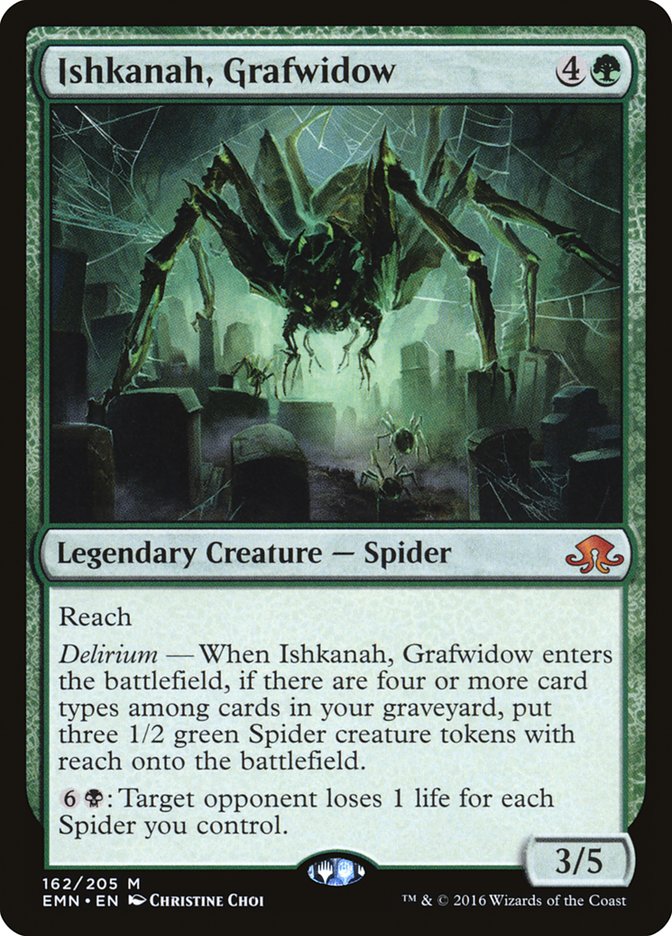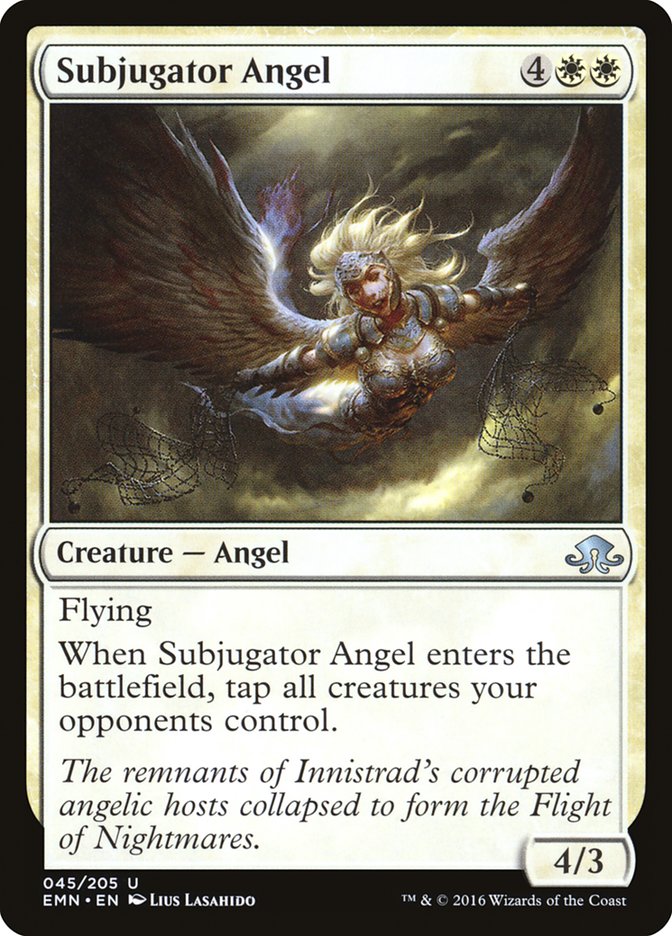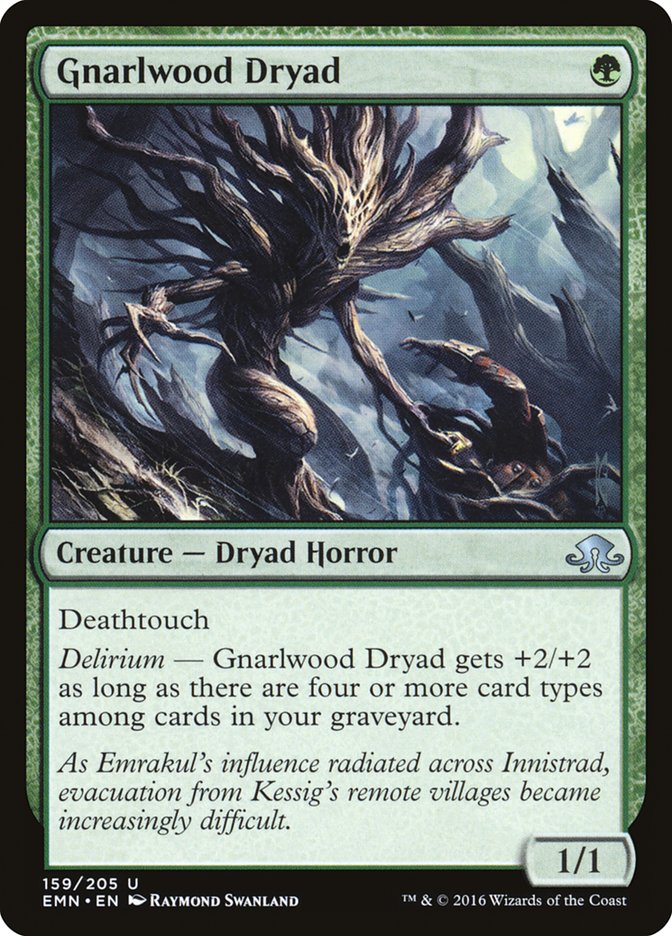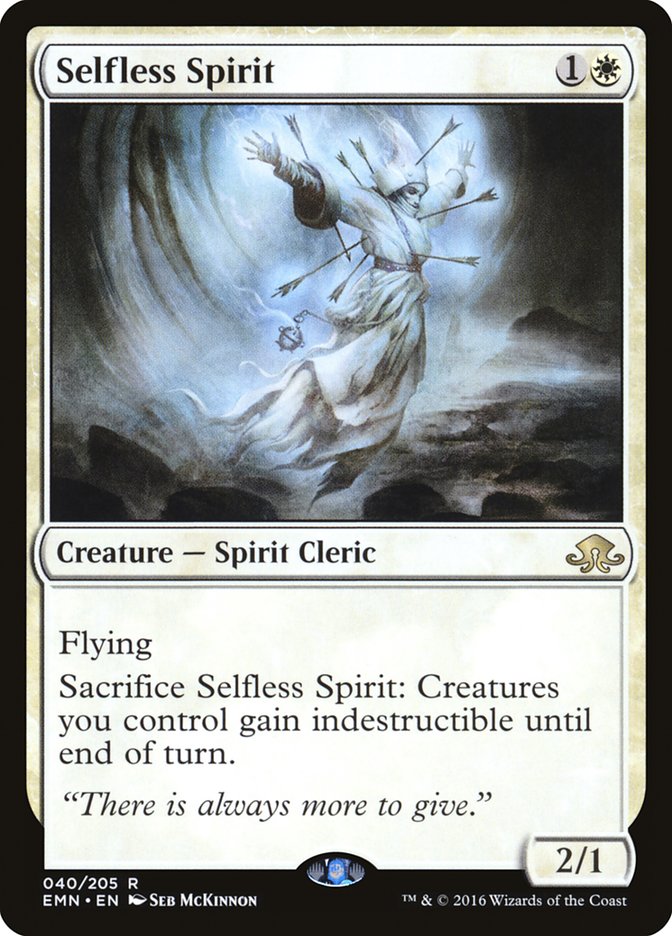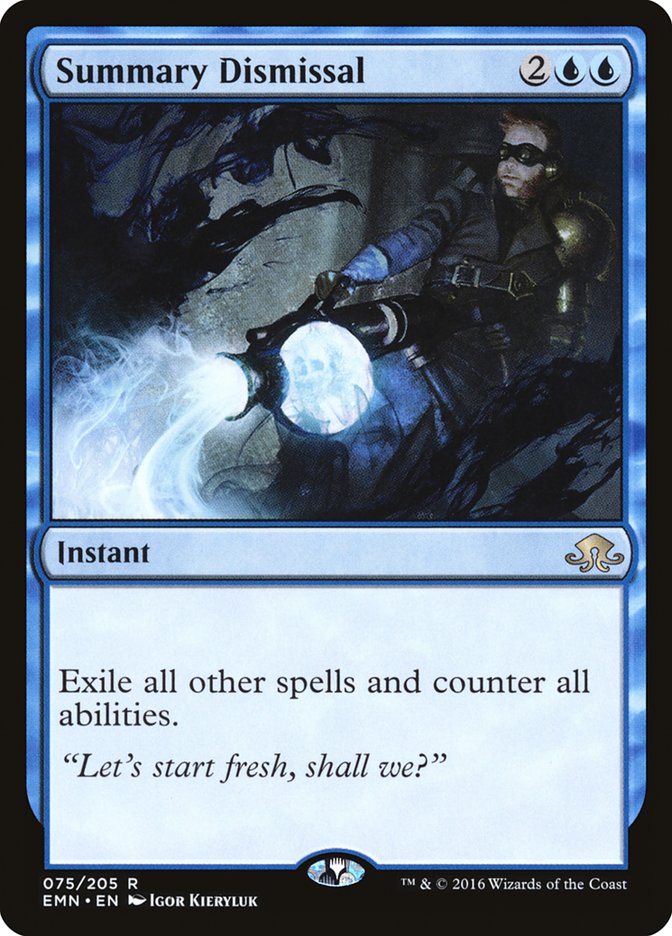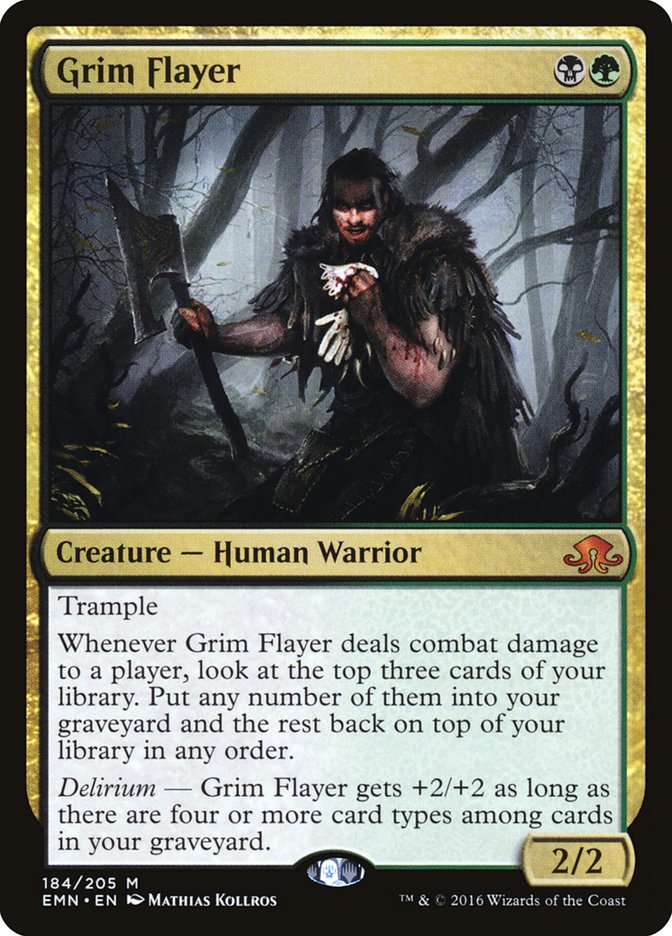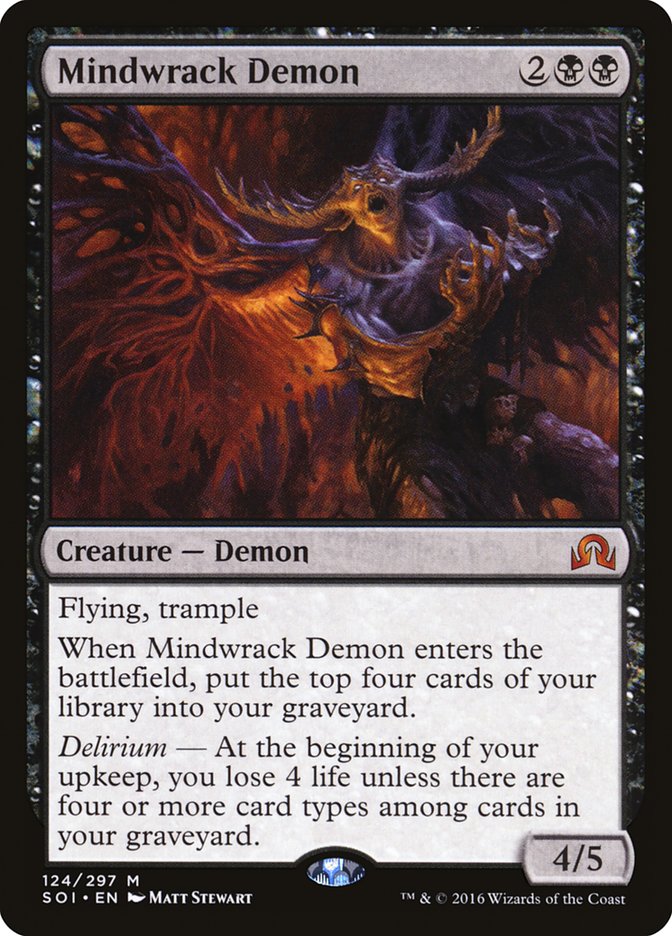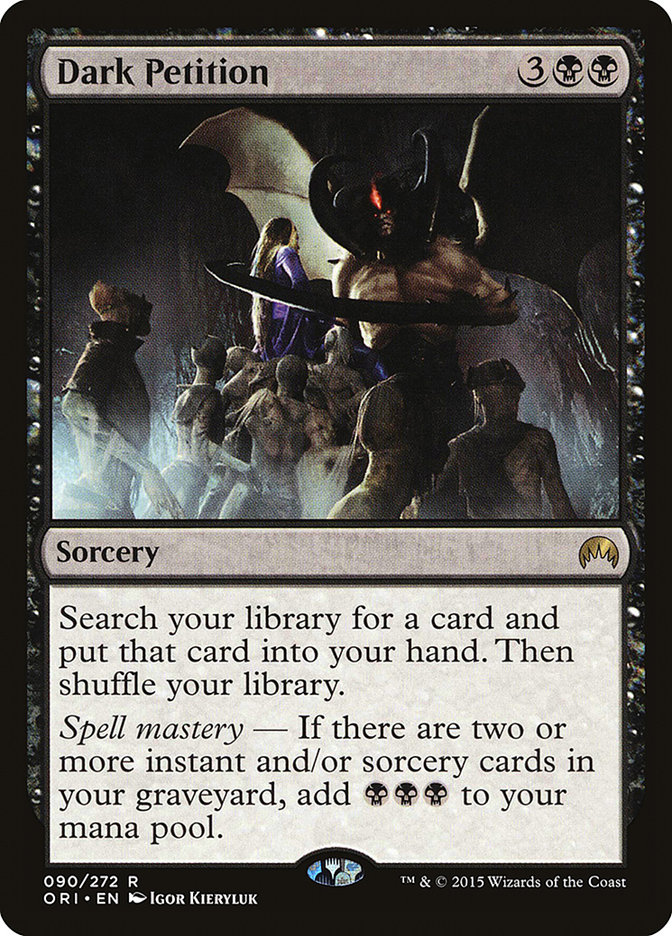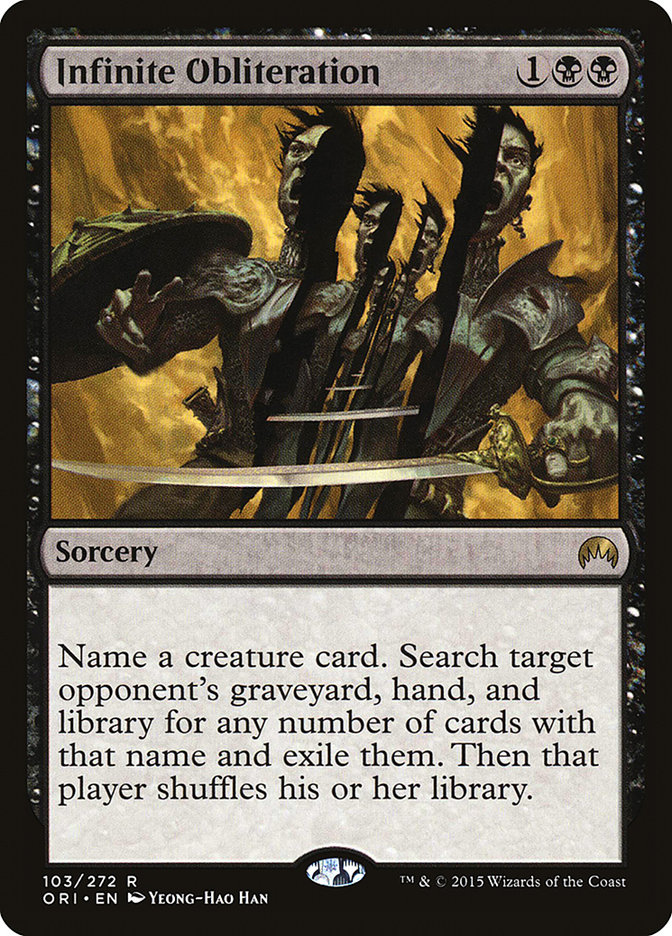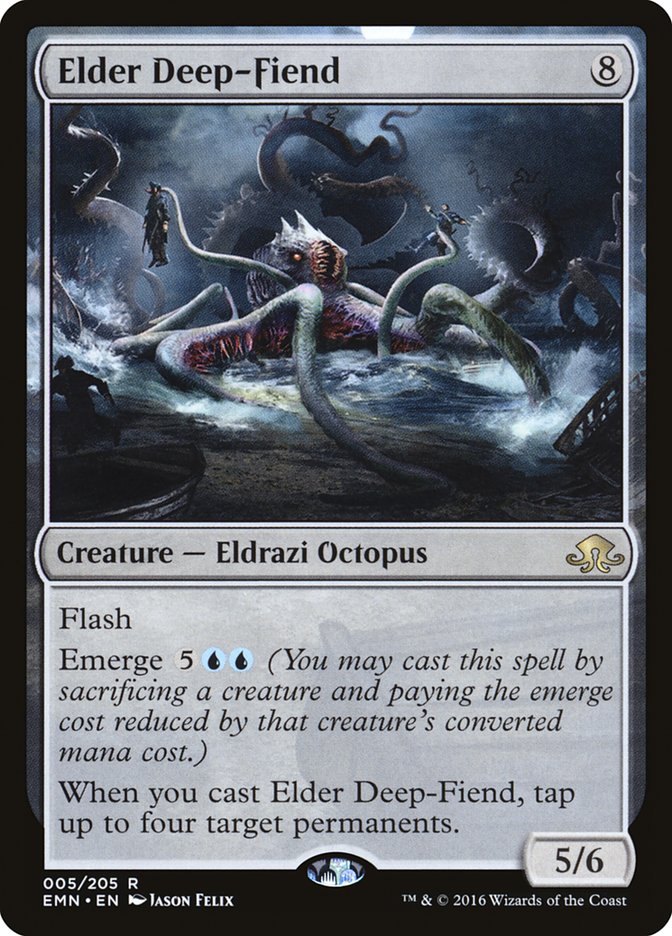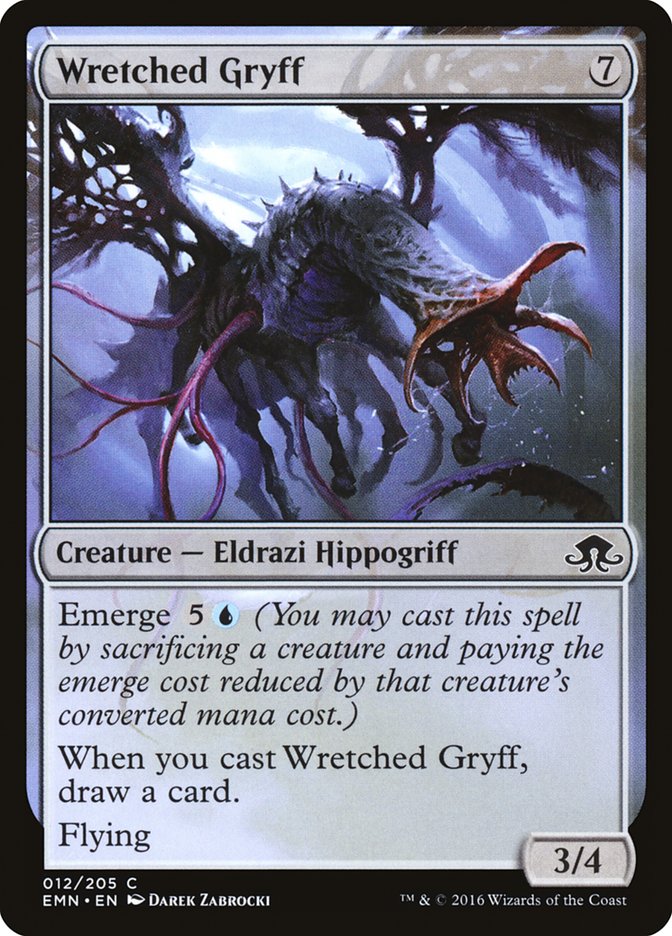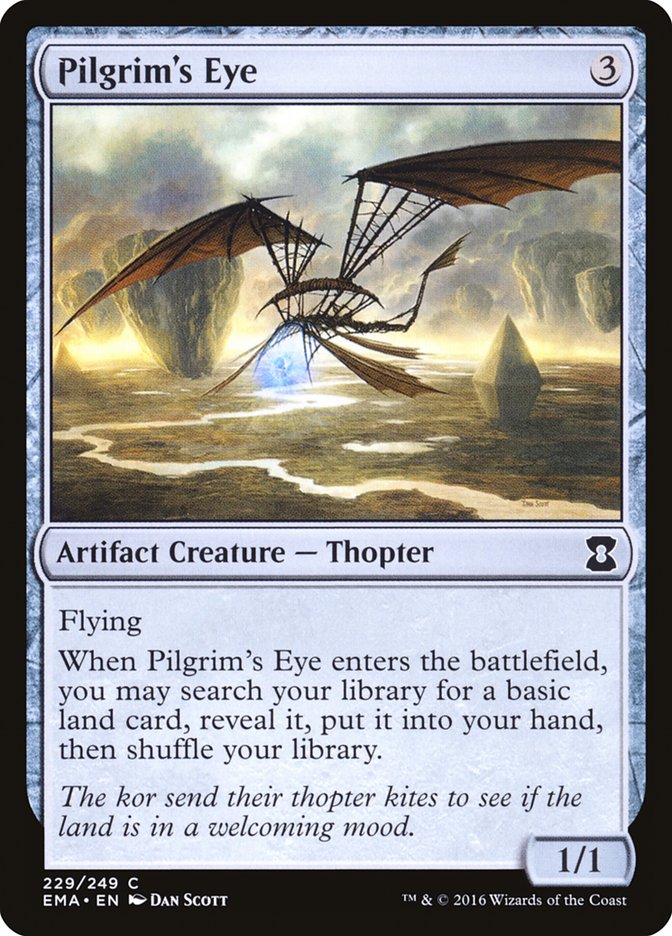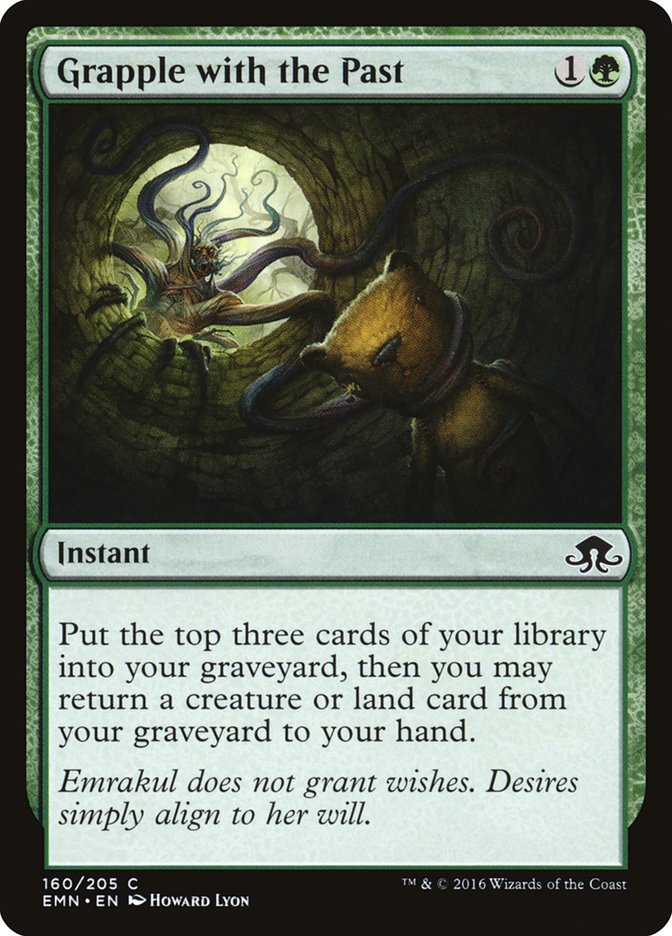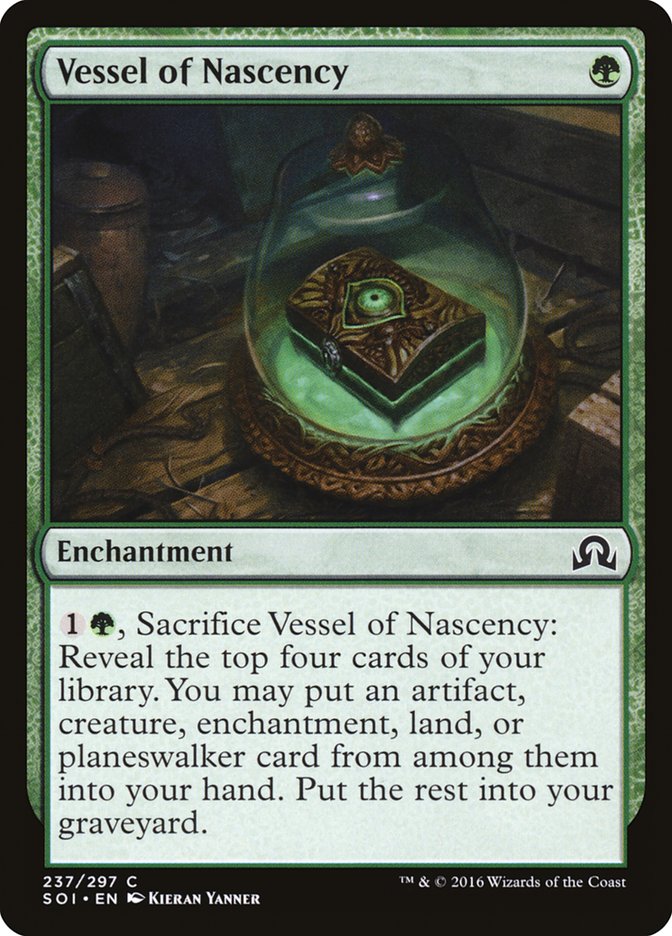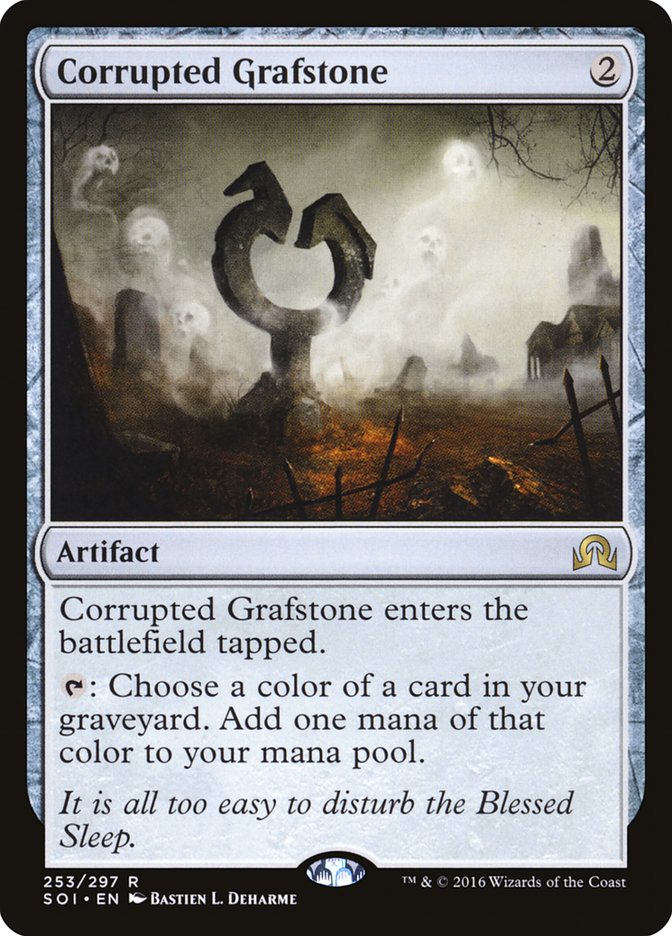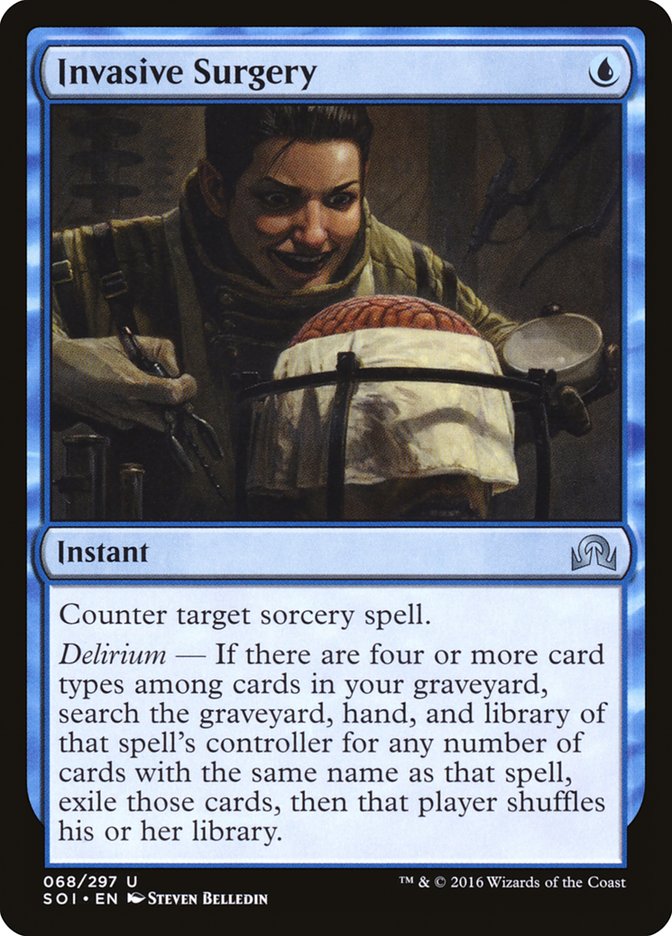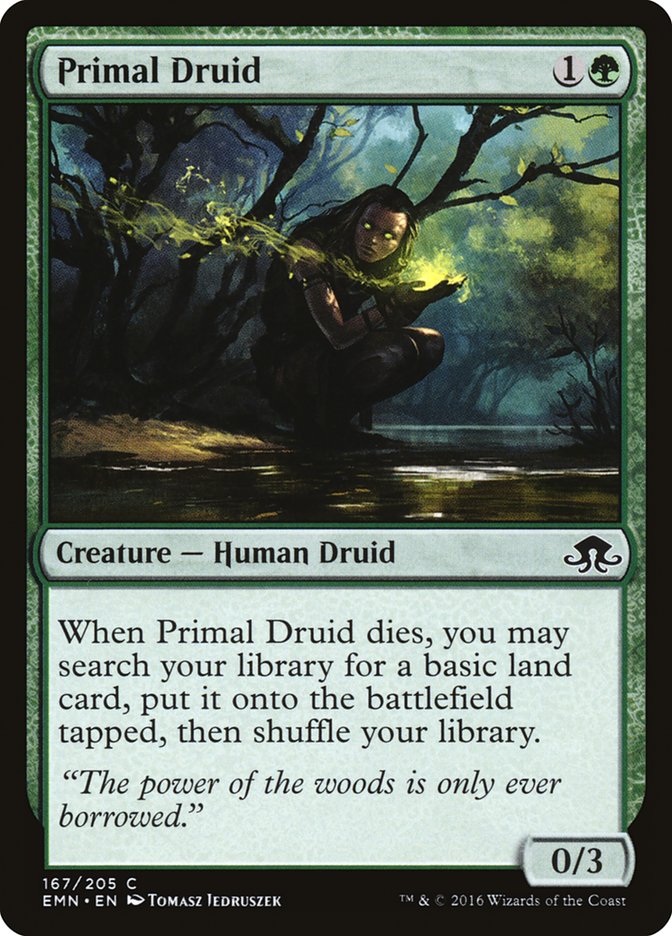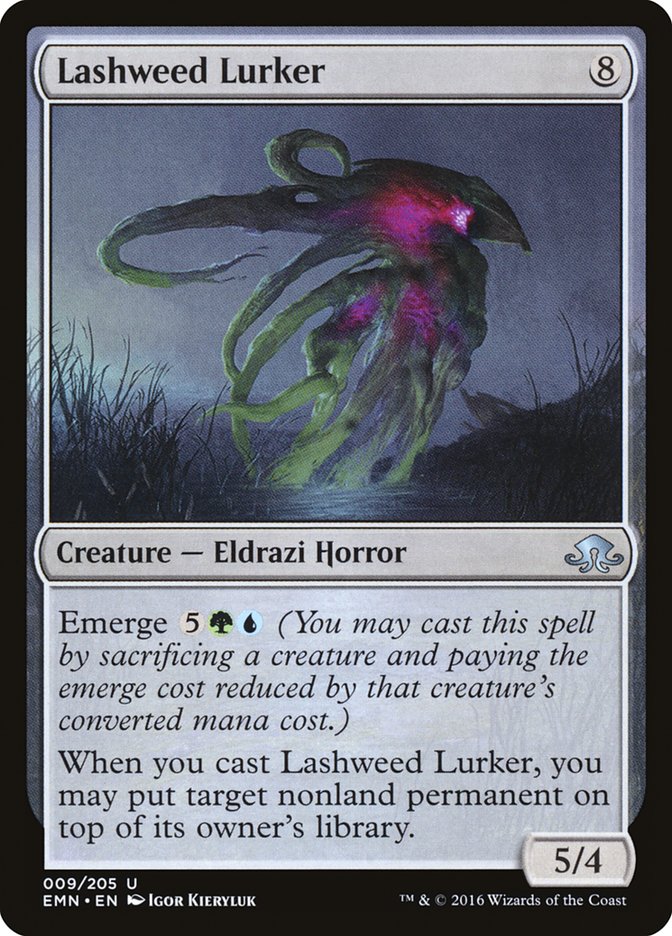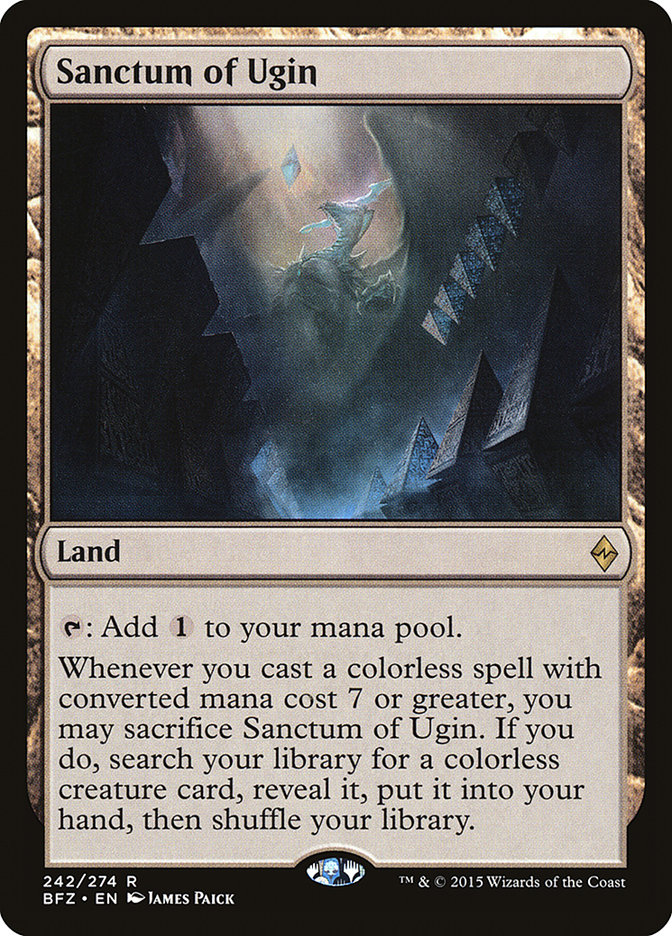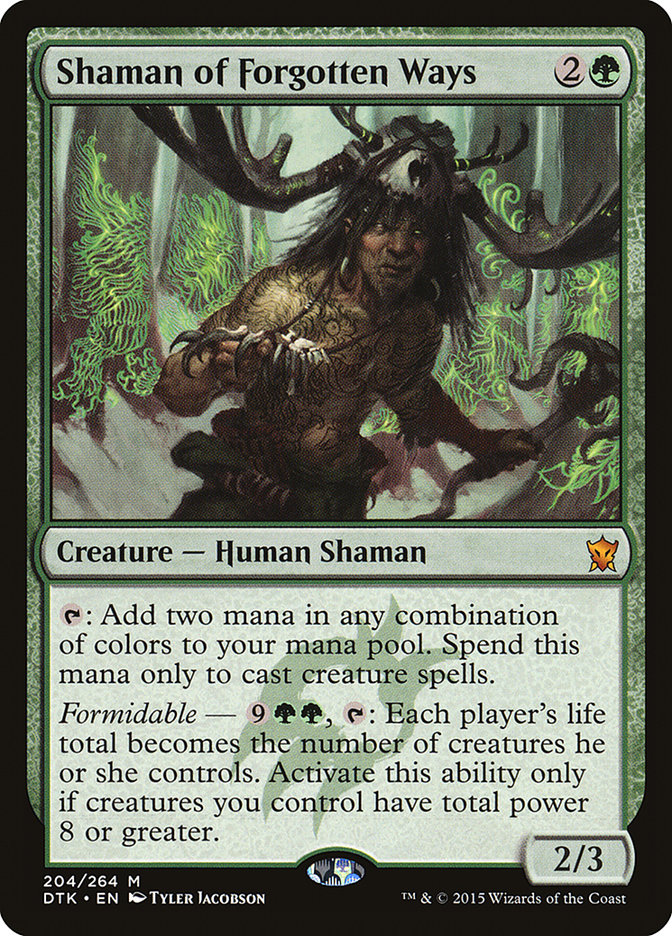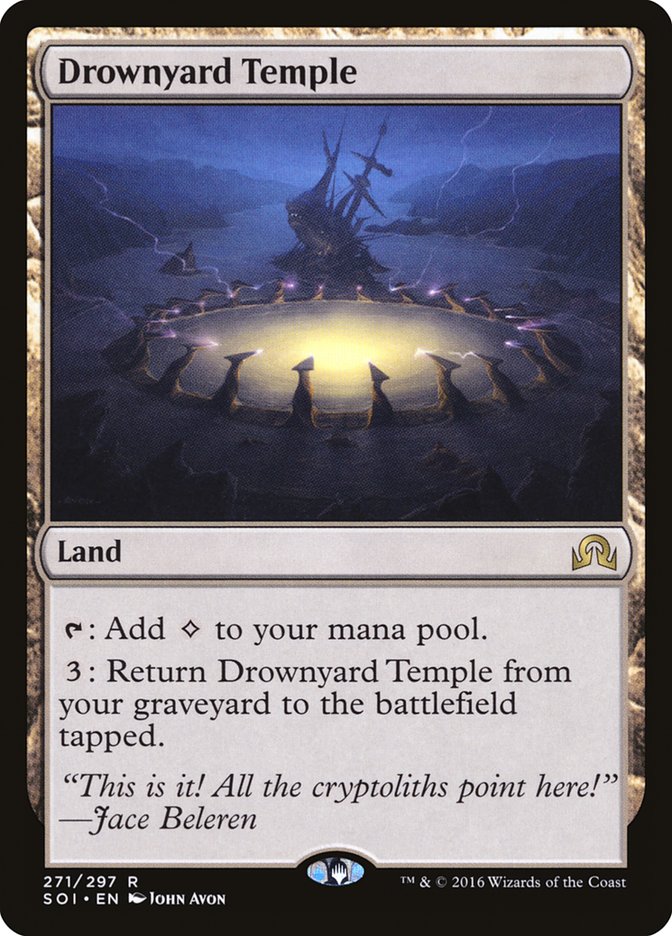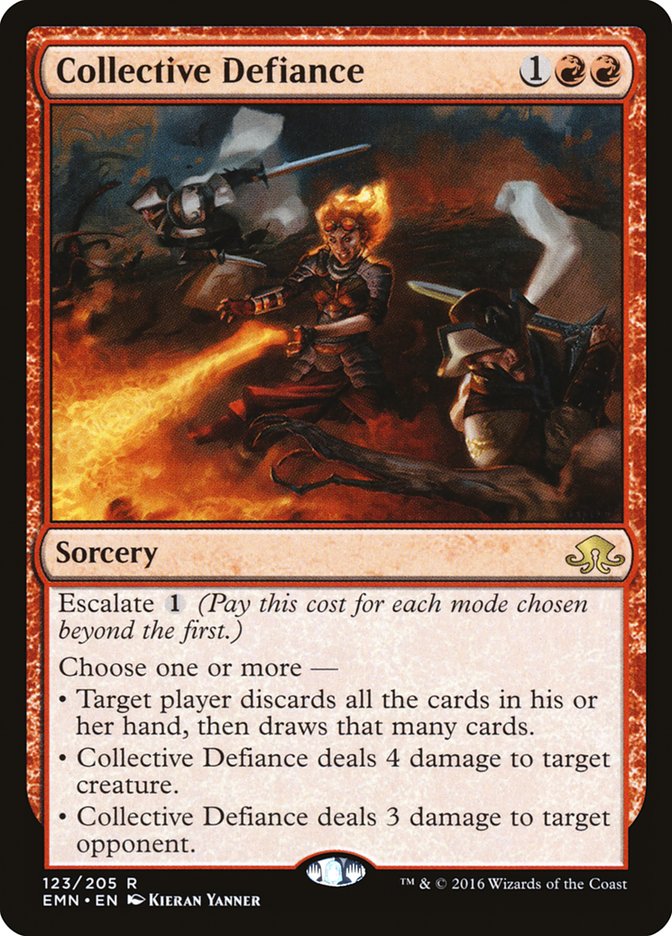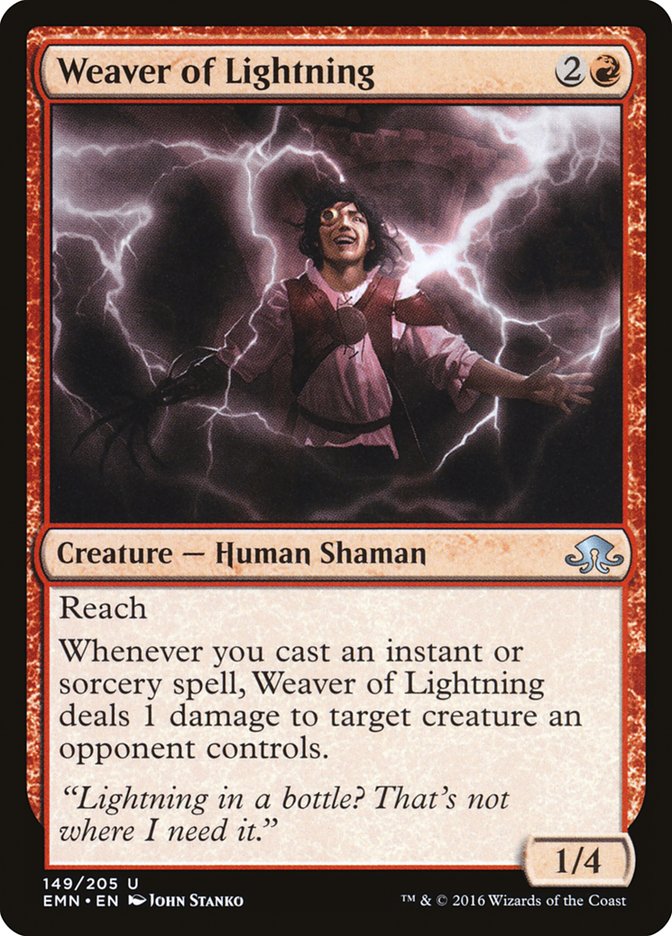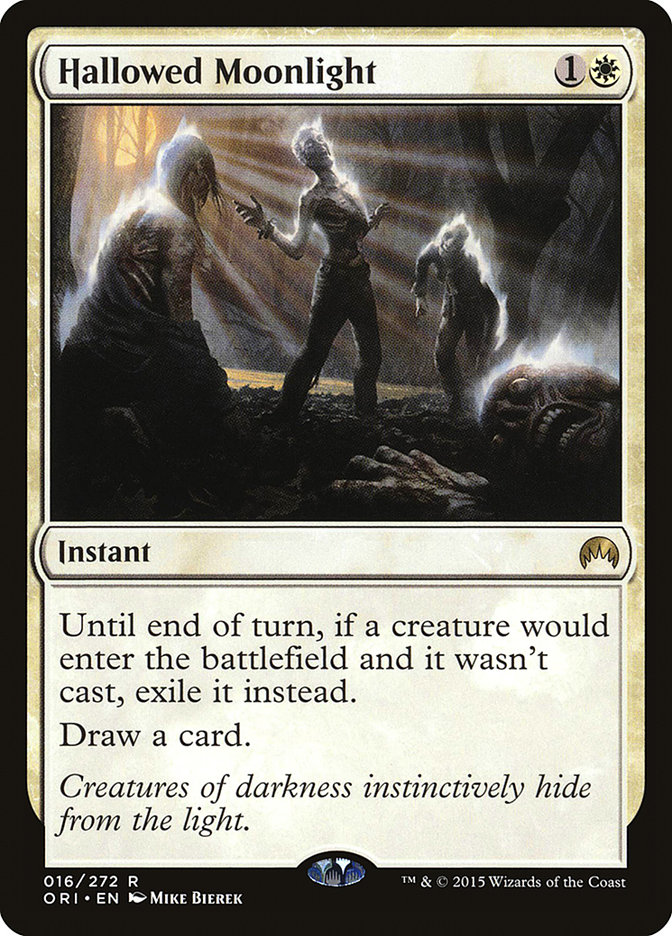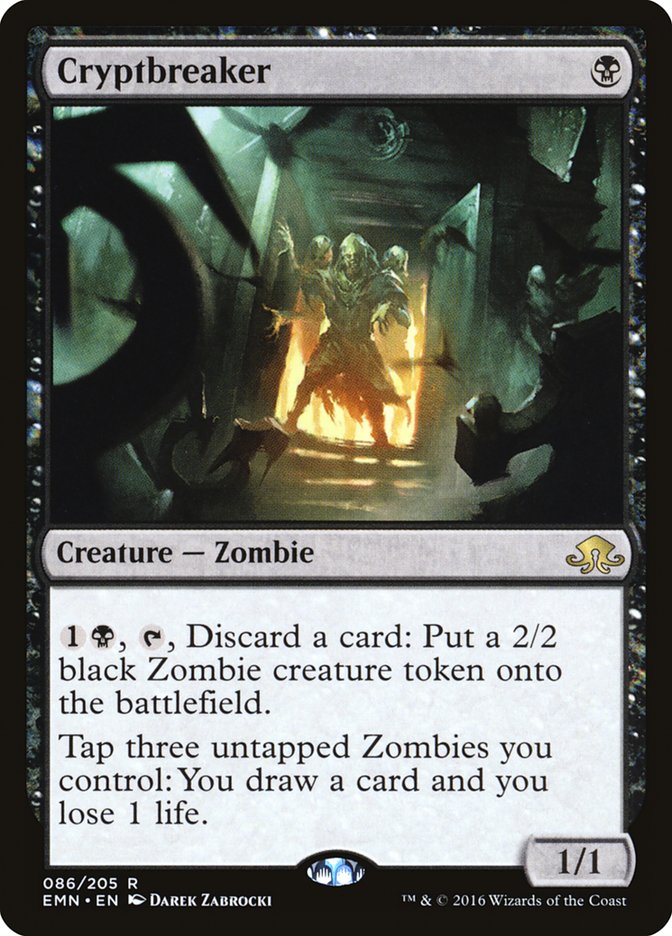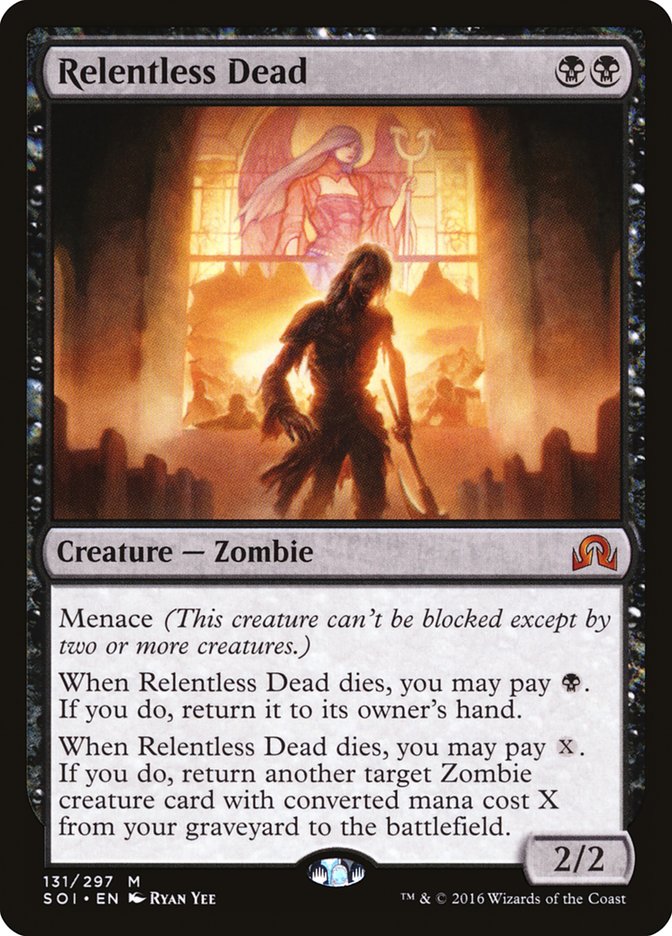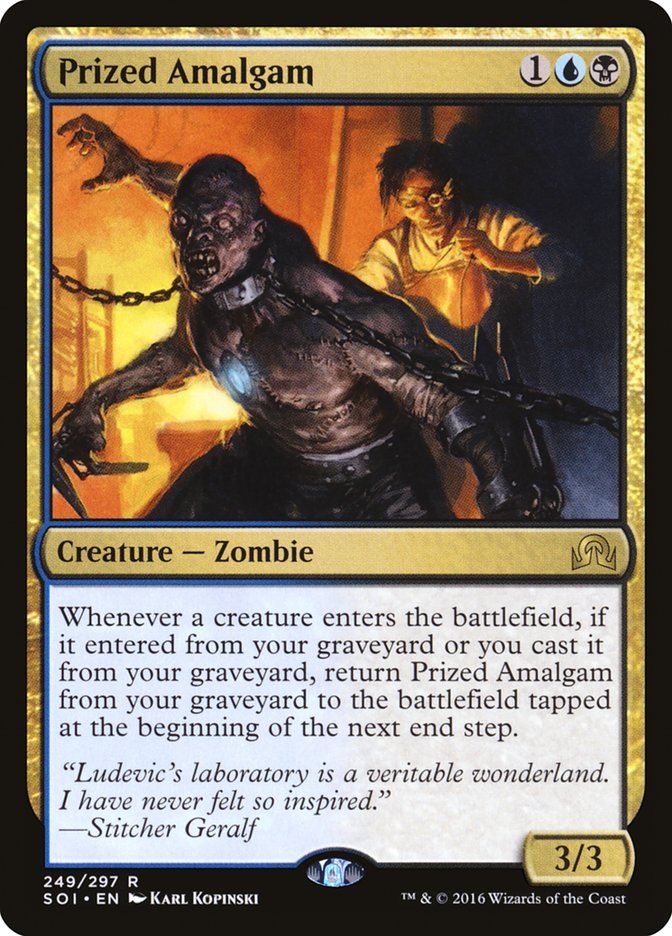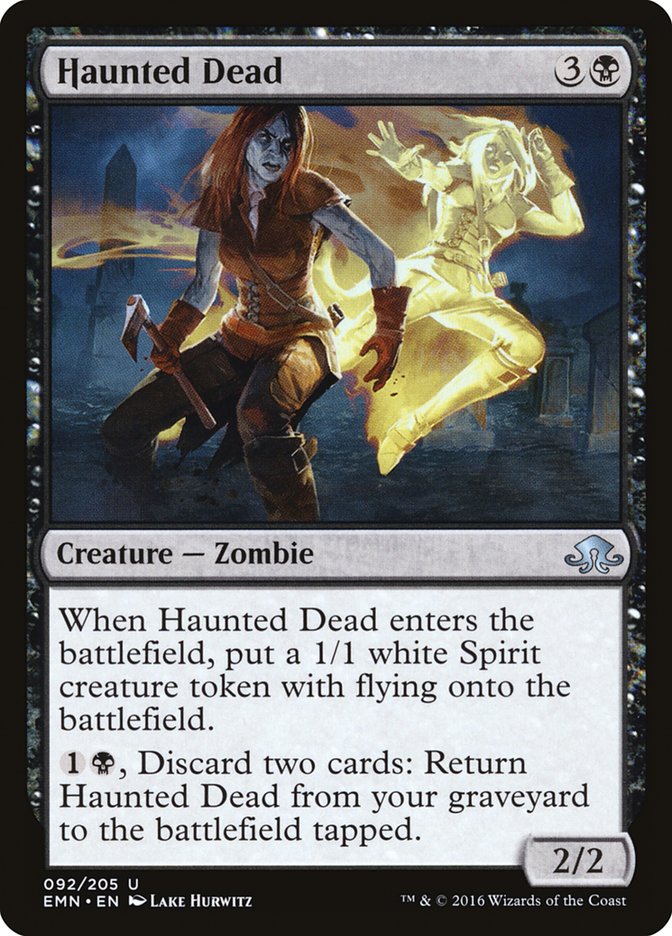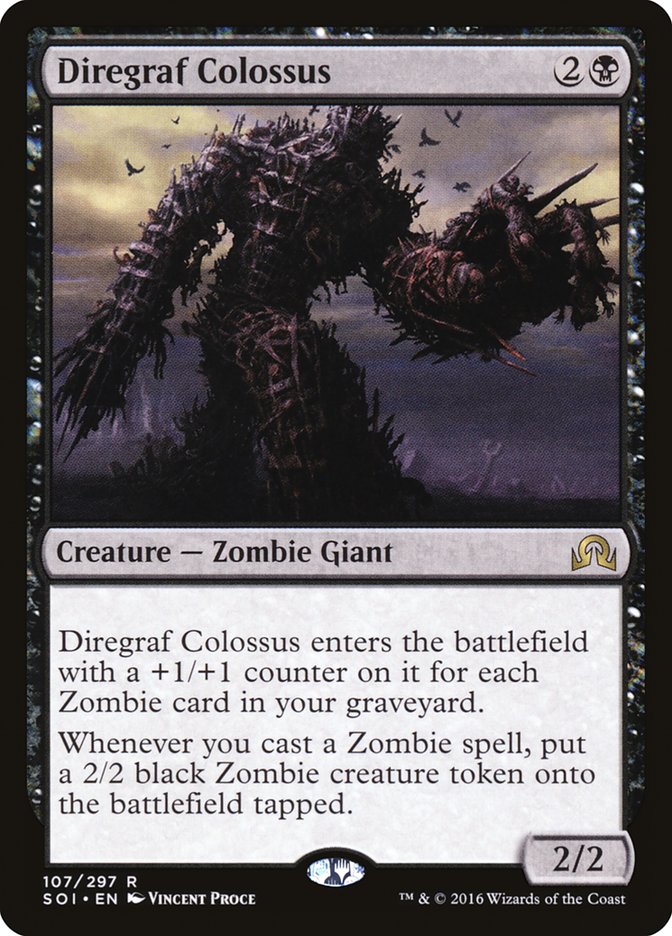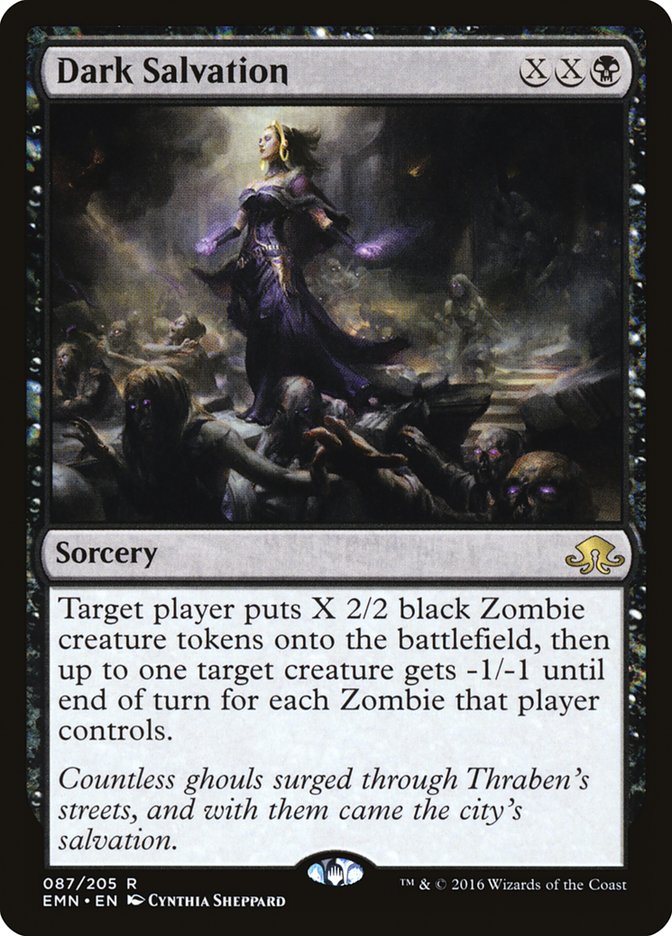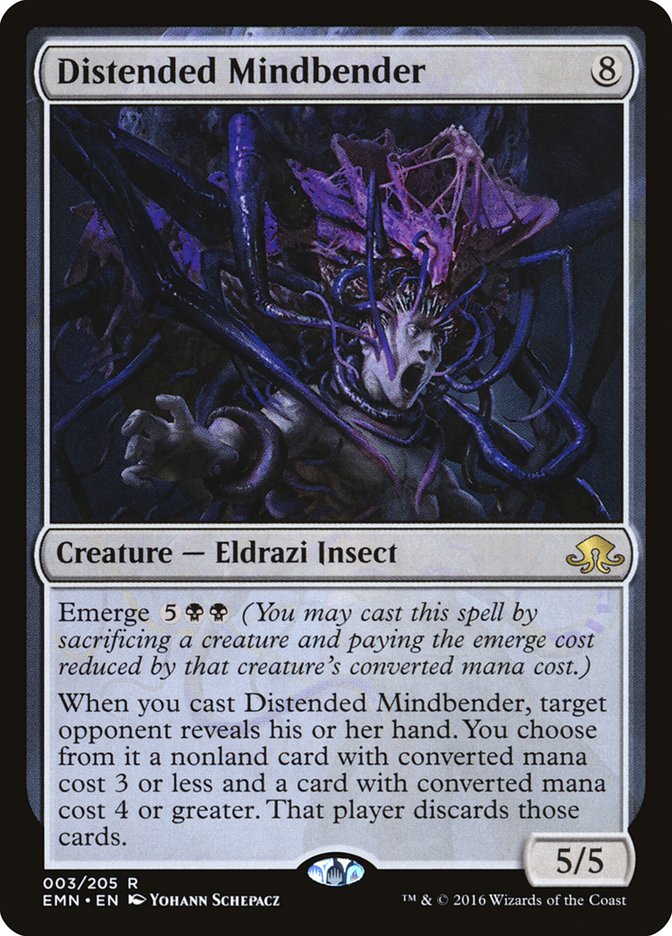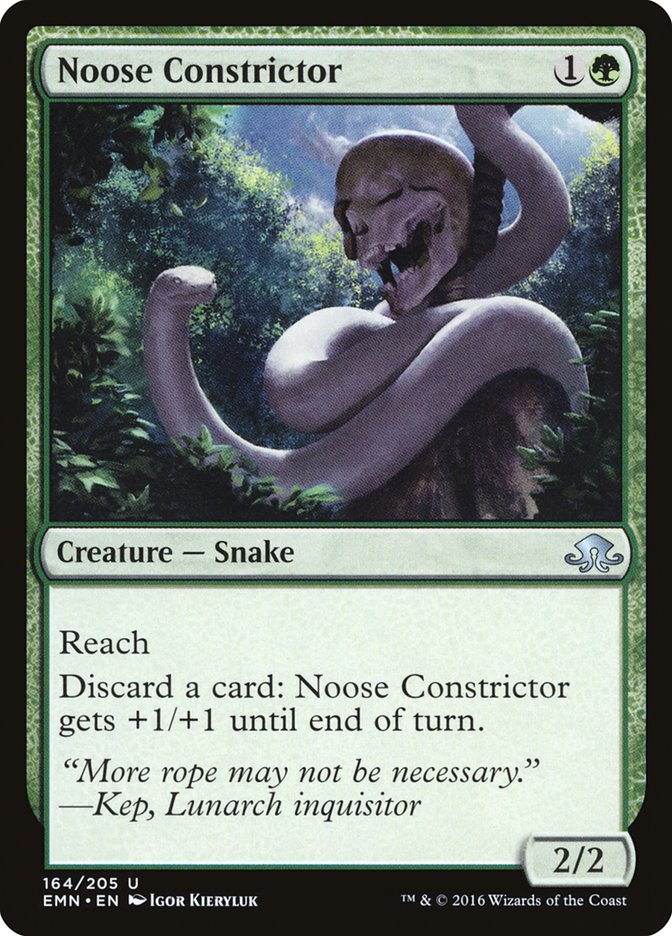See!
Everything’s fine!
Did you really think Bant Company was the only deck?
Emrakul and Ishkanah have come to save us!
It’s not just that there were more Emrakuls than Spell Quellers in the Top 8, more Ishkanahs than Spell Quellers. Hell, Lukas Blohan won without either one or Collected Company. The format is just sweet and strange and weird, and we’ve just barely scratched the surface.
Over 60% Emrakul, eh?
Yeah, but we’re talking about a lot of different decks, a lot of different cards. Besides, the matches were fun to watch and clearly skill-intensive. Just look at the Top 8:
● Owen Turtenwald – The best player in the world’s induction into the Magic Hall of Fame was announced this weekend. He decided to celebrate with another Top 8 and another Player of the Year title.
● Luis Scott-Vargas – With his third Top 8 in a row, Luis joins Jon Finkel as the second player to ever have a career worthy of Hall of Fame induction since being elected.
● Reid Duke, Sam Pardee, Andrew Brown, Ken Yukuhiro, Yuta Takahashi, and the champion, Lukas Blohan? Talk about a star-studded Top 8!
Okay, let’s take a look at the various strategies employed at the Pro Tour and see how they stacked up against one another, both on Day 1 and in the winning record metagame, weighted by finish:
|
Archetype |
Day 1 Metagame |
Winning Record Metagame |
|
Bant Company |
22.9% |
22.4% |
|
G/B Delirium |
16.2% |
19.4% |
|
Temur Emerge |
5.6% |
12.7% |
|
B/W Control |
7.0% |
9.7% |
|
Jund Delirium |
4.0% |
9.1% |
|
R/G Ramp |
4.3% |
9.1% |
|
Four-Color Emerge |
6.9% |
5.5% |
|
Naya Legends |
2.0% |
3.0% |
|
U/R Visions |
1.0% |
1.8% |
|
W/R Humans |
1.3% |
1.8% |
|
B/U Zombies |
6.3% |
1.8% |
|
Sultai Delirium |
2.0% |
1.2% |
|
Red Eldrazi Ramp |
0.3% |
1.2% |
|
Esper Control |
0.3% |
1.2% |
|
G/W Tokens |
4.6% |
0.0% |
|
Misc. |
6.3% |
0.0% |
While 22.4% Bant Company is still a lot, remember, that’s merging every variation of Bant Company together: traditional, Humans, Spirits, and Eldrazi. That’s also a far cry from the 40% we were seeing pre-Pro Tour. Even more importantly, notice the decline from day 1. Bant Company actually slightly underperformed!
Now, this isn’t to suggest that Bant Company isn’t a good deck. It’s actually a great deck. It’s just that the entire metagame targeted it, and it ended up pretty close to 49%. I’ve got a feeling that when the metagame shifts to fight back against the Delirium and Emerge strategies that have radically changed the landscape of Standard, we’re going to see Bant Company rise back up to elite win percentages on some weeks.
Let’s take a look at the top-finishing Bant Company decks:
Creatures (26)
- 1 Jace, Vryn's Prodigy
- 4 Reflector Mage
- 4 Sylvan Advocate
- 2 Archangel Avacyn
- 3 Tireless Tracker
- 4 Duskwatch Recruiter
- 4 Spell Queller
- 4 Selfless Spirit
Lands (26)
Spells (8)

Luis Scott-Vargas is not the sort of guy that has a problem with playing “Soulless Bant.” His list is nearly exactly the same as Devin Koepke’s winning list from two weeks ago. The only change to the maindeck was replacing the three Thalia, Heretic Cathars with a Jace, Vryn’s Prodigy; a Duskwatch Recruiter; and a 26th land. Devin’s mana curve was a little heavy on threes, even for a Company deck. Not surprisingly, Luis and the other CFB players smoothed it out a little in tuning.
The CFB list was not without technology, however.
Subjugator Angel is a surprising new addition designed to break open standoffs. A lot of Bant Company mirrors get bogged down by armies of 2/3s. Having even a single copy of Subjugator Angel in your deck gives you something to dig to with Duskwatch Recruiter that can’t be Spell Quellered and will typically end the game on the spot.
It isn’t even possible for Luis to get delirium Game 1, so sideboarding Gnarlwood Dryad is some outside-the-box thinking. Even after sideboarding, however, there are just two Tamiyo, Field Researchers for actually powering it up. Really, Gnarlwood Dryad is all about being a 1/1 deathtouch for one. It’s great at dealing with 2/1s for one, even if they end up getting pumped by Thalia’s Lieutenant or Always Watching, while also keeping your creature count high for Collected Company.
Creatures (26)
- 4 Jace, Vryn's Prodigy
- 2 Nissa, Vastwood Seer
- 4 Reflector Mage
- 4 Sylvan Advocate
- 4 Tireless Tracker
- 4 Duskwatch Recruiter
- 4 Spell Queller
Lands (25)
Spells (9)

Yuta’s list is very similar, with the only fundamental difference being the exclusion of Selfless Spirit, making room for the full four Jaces.
Yuta’s sideboard has a heavier spell component with four Negates and a Summary Dismissal to fight against control and ramp.
I particularly love Summary Dismissal right now, as it is one of the best answers to Emrakul, the Promised End. So often, Emrakul comes down a turn before they would die and instead wins the game for them. If you Summary Dismissal Emrakul, you counter not only the body but also the Worst Fears trigger.
We should still consider Bant to be the defining deck of the format, but I’m not sure it’s even fair to describe it as the most popular. While the above chart merges all four Bant Company variants into one, Delirium is split between many. While there are some important differences between different colors of Delirium decks, they have enough overlap that it’s not unreasonable to merge them, as well. Let’s take a look at the metagame when we collapse together similar archetypes:
|
Archetype |
Day 1 Metagame |
Winning Record Metagame |
|
Delirium |
22.2% |
29.7% |
|
Bant Company |
22.9% |
22.4% |
|
Emerge |
13.5% |
18.2% |
|
Ramp |
6.6% |
10.3% |
|
B/W Control |
7.0% |
9.7% |
|
Misc. |
27.8% |
9.6% |
This is actually a fairly perfect snapshot of the format at the moment, and very revealing. While Bant Company was slightly more popular on Day 1 than all Delirium strategies combined, Delirium decks performed incredibly across the board. I was unable to make it to Australia this weekend, but as I’ve mentioned in previous weeks, I’m a big fan of G/B Delirium.
Creatures (15)
- 1 Den Protector
- 2 Nissa, Vastwood Seer
- 2 Sylvan Advocate
- 3 Tireless Tracker
- 1 Emrakul, the Promised End
- 2 Ishkanah, Grafwidow
- 4 Grim Flayer
Planeswalkers (4)
Lands (24)
Spells (17)

Sam’s list is sort of like a Sultai Delirium control deck, but replacing Jace, Vryn’s Prodigy with Grim Flayer and Oath of Jace with Tireless Tracker.
While Grim Flayer starts as just a 2/2, Sam has a lot of removal to help get it through. If it ever connects even once, it’s usually devastating. Now we’re talking about a 4/4 trampler for two that gives you the selection of a Prognostic Sphinx!
I love the move away from Mindwrack Demon. It’s a fine card in the abstract, but Spell Queller is just so brutal for mainphase four-drops. Besides, Ishkanah, Grafwidow is just so much better. It may seem like Ishkanah isn’t a natural fit with Languish, but you typically Languish the turn before you Ishkanah, which is amazing. Besides, if you drop Ishkanah, you are usually going to be able to lock up the battlefield pretty well, forcing your opponent to overcommit. Languish then and you’ve decimated them; you even get to keep the 3/5 with upside.
As for Emrakul, Sam’s deck can play the Emrakul game going long but is also set up to try to trump others’ Emrakul game. Transgress the Mind helps, of course, but he’s also got two copies of Dark Petition to find Infinite Obliteration!
A lot of these ramp decks are relying on Emrakul a great deal. Rip all of the copies out of their deck and they might not be able to go big enough to actually gain a game-winning advantage long-term. The Dark Petitions are slot-efficient anyway, fueling the Seasons Past semi-transformational sideboard plan for grinding out midrange opponents.
Of course, G/B Delirium was not the only strategy to overperform. Actually, if you look at the other three big strategies, Emerge, Ramp, and B/W Control, all three performed quite well. While Delirium, Emerge, Ramp, and B/W Control made up just under half of the Day 1 metagame, their numbers rose to more than two-thirds of the winning record metagame. Sorry, Bant Company. Sorry, “Misc.”
While Delirium-based strategies were very successful despite being so popular, Elder Deep-Fiend decks overperformed by almost the exact same percentage (actually, just a tiny bit more).
Creatures (16)
- 3 Pilgrim's Eye
- 3 Emrakul, the Promised End
- 1 Wretched Gryff
- 4 Gnarlwood Dryad
- 3 Elder Deep-Fiend
- 2 Ishkanah, Grafwidow
Planeswalkers (1)
Lands (21)
Spells (22)

The Pantheon “Temurge” deck defies convention, blending Delirium with Ramp, playing out like a combo deck, and using four Elder Deep-Fiends plus Wretched Gryffs despite just three Pilgrim’s Eyes for three-cost creatures!
Owen’s list abandons the obsession with maximizing the turn 4 Elder Deep-Fiend, instead just playing it whenever it would be a blowout. Sometimes you sacrifice Ishkanah, Grafwidow and play a Deep-Fiend for two mana. Sometimes you sacrifice Gnarlwood Dryad and play it for six.
By abandoning the two- and three-cost creatures you would normally sacrifice, Owen gets to make full use of Kozilek’s Return. Gnarlwood Dryad lives through the first Kozilek’s Return anyway, and then you can sacrifice it to cast Elder Deep Fiend on turn 6 (5 with Nissa’s Pilgrimage or Corrupted Grafstone), triggering the Kozilek’s Return for five points of damage. This is particularly devastating to do in response to your opponent’s Archangel Avacyn that they just tapped out to cast during your end step. Sure, maybe the Elder Deep-Fiend taps are wasted, but if you’re opponent no longer has a battlefield, who cares?
Grapple with the Past helps fuel Gnarlwood Dryad; Ishkanah, Grafwidow; and Emrakul, the Promised End. Plus, every time you flip a Kozilek’s Return, you are effectively up a card. The Regrowth part of the card is particularly deadly with Elder Deep-Fiends.
Turn 3: Pilgrim’s Eye.
Turn 4: Elder Deep-Fiend, tap all of your permanents.
Turn 5: Attack for five. Cast a Gnarlwood Dryad. Then, on your upkeep, Elder Deep-Fiend (sacrificing the other Elder), tap all of your permanents, and then Grapple with the Past to get back the other Elder Deep-Fiend.
Turn 6: Attack for five. Then, on your upkeep, Elder Deep-Fiend (sacrifice Gnarlwood Dryad), tap permanents.
Turn 7: Attack for ten.
Grapple with the Past quickly becomes a Demonic Tutor since we are flipping over so many cards into our graveyard with Gather the Pack and Vessel of Nascency. Gather the Pack may seem surprising, since we’ve got just sixteen creatures and will actually miss 20% of the time. However, flipping over five cards is actually not the worst fail state, and besides, we’re usually going to have Spell Mastery active. Despite being 20% to miss entirely, we’re actually 40% to hit two or more, so we’re actually going to be averaging more than one creature per Gather.
While not the most mana-efficient tutor in the world, Vessel of Nascency helps fill our graveyard and is an enchantment for Emrakul and delirium. Likewise, Corrupted Grafstone isn’t the most attractive accelerator in the world, but it is an artifact to go along with Pilgrim’s Eye. It’s also very easy to turn it on immediately, and Kolaghan’s Command is at an all-time low.
Invasive Surgery costing just one mana is a super-big deal. They knew they were going to be attacked by players loading up on Transgress the Mind and Infinite Obliteration to go after Emrakul, and this was the most efficient way to always have your guard up. Because Temur gets delirium so easily, the Lobotomy kicker is usually active, meaning Den Protector or Goblin Dark-Dwellers can’t set up another Infinite Obliteration.
It’s kind of awesome to see Coax from the Blind Eternities in the sideboard but without any Eldrazi to get. Instead, Owen sideboards one or more out but is primarily planning on finding any Emrakul that should happen to get exiled by Transgress the Mind, Infinite Obliteration, Summary Dismissal, or whatever.
The other version of Temur in the Top 8 was Andrew Brown’s, with a more aggressive build that leans heavily into emerge rather than Emrakul (which is merely a sideboard plan).
Creatures (24)
- 3 Shaman of Forgotten Ways
- 4 Jace, Vryn's Prodigy
- 1 Nissa, Vastwood Seer
- 4 Matter Reshaper
- 4 Wretched Gryff
- 3 Elder Deep-Fiend
- 1 Lashweed Lurker
- 4 Primal Druid
Lands (24)
Spells (12)

Andrew’s list is more of a “value emerge” deck with both Primal Druid and Matter Reshaper giving us excellent value when we sacrifice them to Wretched Gryff, Elder Deep-Fiend, or Lashweed Lurker.
One of the big advantages to an emerge-centric strategy in a Bant Company metagame is just how many awesome threats you’ve got access to on turn 4 that can’t be Spell Quellered. Additionally, Bant Company is just absolutely annihilated by Kozilek’s Return. They can’t even Dromoka’s Command the trigger! Their hope is that they can flash down an Archangel or Collected Company into a Selfless Spirit, but that’s a big ask, given how easy it is for Elder Deep-Fiend to show up at the most awkward moments.
Sanctum of Ugin lets us take little advantages and turn them into major snowballing ones. While Chaining Elder Deep-Fiends is merely “a plan” in the Pantheon build, it’s “the plan” in Brown’s list. The biggest problem, however, is the strain it puts on your manabase.
Finally getting its day in the sun, Shaman of Forgotten Ways helps make up for the strain that Sanctum of Ugin puts on our manabase, giving us extra sources of blue mana for our Emerge threats and Jaces. Going long, there is also the threat of putting all of our extra mana to use when we threaten to Biorhythm our opponents after tapping them out with Elder Deep-Fiend.
As for red mana? Kozilek’s Return is our only red card maindeck, so five sources is actually less crazy than normal. Besides, Primal Druid can find our Mountain and Jace can discard Kozilek’s Return to sidestep the whole “needing red mana” thing.
One of the things that is so clever about Brown’s list is how he managed to fit so many creatures that cost two or three while still being set up to take advantage of Kozilek’s Return.
While Emrakul and Ishkanah have gotten a lot of praise this weekend, I think you can make a pretty good case for Kozilek’s Return being in the discussion for the MVP award. Here are two R/G Ramp decks made possible by Emrakul, the Promised End’s power combined with Kozilek’s Return’s positioning in the format.
Creatures (13)
- 2 Dragonlord Atarka
- 1 Nissa, Vastwood Seer
- 2 World Breaker
- 1 Sylvan Advocate
- 2 Hedron Crawler
- 1 Ulvenwald Hydra
- 2 Emrakul, the Promised End
- 2 Ishkanah, Grafwidow
Lands (22)
Spells (25)

Reid’s deck plays mostly like a traditional ramp deck, but with a little less ramping and a little more digging in order to set up Emrakul. She doesn’t require as much raw mana as Ulamog, so it’s nice to be able to set Gather the Pack and Vessel of Nascency instead of Explosive Vegetation.
Drownyard Temple is really cool here! While lots of people couple Drownyard Temple with looting, like Magmatic Insight, Reid uses it for two reasons:
1. It fuels World Breaker forever, locking people out.
2. It gives us an extra land to play every time we flip one to Gather the Pack, Vessel of Nascency, or Grapple with the Past.
Notice both Gnarlwood Dryad and Shaman of Forgotten Ways in the sideboard. Both give us early defense while also living through Kozilek’s Return.
No one has ever accused Reid of not being willing to grind people out in attrition wars!
Creatures (11)
Planeswalkers (2)
Lands (24)
Spells (23)

Ken’s list has a lot less selection, and amusingly uses Tormenting Voice without Drownyard Temple. Instead of the self-mill approach we’ve seen, Ken fuels his graveyard with looting, using Tormenting Voice; Chandra, Flamecaller’s 0 ability; and a full playset of Collective Defiance.
Collective Defiance is an underrated card that has only been absent because of the complete unplayability of red aggro. Who wants to play a deck built around 2/1s for one when everyone plays a bunch of 2/3s?
Collective Defiance is a removal spell that can often kill a planeswalker with upside. It also gives us a lot of selection by letting us discard our entire hand, quickly filling the graveyard and looking for Emrakul. We’re usually not doing this on turn 3 or anything. Rather, we’re frequently playing Nissa’s Pilgrimage on turn 3 and then Collective Defiance on turn 4, employing all three modes.
Because Ken has so much ability to loot his entire hand away, he can afford to play with a lot more early defense than most ramp decks. In addition to Kozilek’s Returns, he’s got a playset of Fiery Impulses and a playset of Hangarback Walkers.
I’m a fan of the card, but it may drop in utility some, now that Spirits, Humans, and Tokens have fallen off the map. Despite being 4.6% of the metagame on Day 1, not a single G/W Tokens deck even managed a winning record! They were just too bad against the countless Kozilek’s Return and Languish decks, not to mention people adjusting for Tragic Arrogance (with Negate plus Tamiyo, Field Researcher as a common plan for Bant Company decks against Tragic Arrogance).
Five decks with Emrakul, the Promised End side-by-side with Ishkanah, two decks with Spell Queller alongside Collected Company. One odd man out…
Creatures (7)
Planeswalkers (6)
Lands (26)
Spells (21)

Blohan’s B/W Control deck was the only non-green deck in the Top 8. It also didn’t try to reinvent the wheel, instead just making smart tuning adjustments to the existing B/W Control deck that were a great read for this format.
The first and possibly most important change is relegating Gideon, Ally of Zendikar to the sideboard. Gideon is an absolutely awesome card, without question. However, it’s a nightmare to walk a Gideon into a Spell Queller. Besides, they’ve got so much flash and tapping, they are going to kill Gideon easily. Yes, Kalitas, Traitor of Ghet can be Spell Quellered too, but he makes a great turn 6 play, when we can protect it, whereas Gideon really wants to come down turn 4.
What about against Emerge? Who do you think wins in a fight, Gideon, Ally of Zendikar or Elder Deep-Fiend? Instead, Blohan leans into creatures, which has the added benefit of powering up Liliana, the Last Hope.
Liliana, the Last Hope is an absolutely awesome card. She’s also a big part of the reason white aggro and red aggro have performed so poorly. She’s also been instrumental is crushing the hopes of U/W Spirits.
I love the use of Hallowed Moonlight here. Collected Company is such a crazy card, and the opportunity cost of having to cycle a Hallowed Moonlight sometimes is just not that high. Besides, Hangarback Walker has also enjoyed a renaissance, and there are some fringe strategies that it hits incidentally. Take, for instance, Ondrej Strasky’s B/U Zombies deck:
Creatures (24)
- 4 Jace, Vryn's Prodigy
- 4 Relentless Dead
- 4 Prized Amalgam
- 4 Voldaren Pariah
- 4 Haunted Dead
- 4 Cryptbreaker
Planeswalkers (2)
Lands (24)
Spells (10)

A lot of people were talking about this deck throughout the weekend, though it kind of fell off at the end of Day 2. The main idea is to use Cryptbreaker and Jace, Vryn’s Prodigy to play a hybrid graveyard recursion/madness strategy.
Cryptbreaker is good on its own, but if you play more Zombies, it becomes amazing. Because Cryptbreaker’s card draw ability has “haste,” so to speak, it’s really nice to draw at least two other Zombies.
Relentless Dead, Prized Amalgam, and Haunted Dead are all great to discard to Jace and the Cryptbreaker, but they all play into the Voldaren Pariah plan as well, giving you plenty of bodies to sacrifice.
Voldaren Pariah is difficult to use, since triple black is not a natural fit for decks capable of madnessing it on turn 3. Rather than resort to substandard madness enablers, Strasky plans on playing it turn 5, with turn 3 off Jace being a bonus. Besides, you want to give them time to play three creatures to kill, and relatively few people play one-drops anymore!
Haunted Dead is an especially key component, as it is not only a fine card to discard, it becomes a discard outlet itself. It’s also our way of returning Prized Amalgam (over and over again, if needed). I love the avoidance of Skaab Stitchwing or other similar cards, instead focusing on individual card quality first, synergy second.
Likewise, Strasky has declined to use Diregraf Colossus. Three-cost cards are a lot less desirable in the Spell Queller metagame, whereas Voldaren Pariah is sometimes a three that can’t be Quelled. Nevertheless, this list still highly values the Zombie creature type.
Dark Salvation’s primary use is as a one-mana kill spell when you’ve built up some Zombies with a kicker that lets you buy extra Zombies for two mana apiece. Sometimes, however, you just spend five mana and make two 2/2s when you’ve got nothing better to do.
When facing control and ramp decks, Distended Mindbender is an extremely interesting sideboard option that might even warrant a spot maindeck with the way the format has been going. If we play a Cryptbreaker or Jace, our turn 3 Haunting Dead easily sets up a turn 4 Mindbender. Prized Amalgam is also a great sacrifice, and sometimes even Voldaren Pariah is the right creature to sacrifice. Going really long, Relentless Dead can actually give us some value from the sacrifice, but that takes a lot of mana.
There was another interesting deck to emerge this weekend that uses some elements of the Zombie deck while really being built around the Elder Deep-Fiend plus Kozilek’s Return experience.
Creatures (21)
- 4 Jace, Vryn's Prodigy
- 1 Nissa, Vastwood Seer
- 4 Prized Amalgam
- 1 Stitchwing Skaab
- 4 Elder Deep-Fiend
- 4 Haunted Dead
- 3 Noose Constrictor
Lands (23)
Spells (16)
Sideboard

Here, the Prized Amalgam plus Haunting Dead combo is used to fuel Elder Deep-Fiends, with Noose Constrictor enabling the Zombies while also contributing to the Elder Deep-Fiend beatdown plan.
Noose Constrictor is just a great card anyway, so it’s not surprising to see it show up in lots of different places. This deck, however, can do some really crazy things. For instance, discard a Haunting Dead on turn 3 and then discard a couple of Prized Amalgams to get it back. Now you’ve got eleven-plus power on the table.
Noose Constrictor also lets us discard Kozilek’s Return at instant speed for when we’re going to flash down an Elder Deep-Fiend that they weren’t expecting to bring a sweeper with it. This is particularly important, as the maindeck doesn’t even have red mana! We can sacrifice the Constrictor to help cast the Deep-Fiend, or we can discard enough cards so that the Constrictor lives through the Return.
The format has undergone a radical upheaval this weekend. Bant Company, armed with Spell Queller, is still a defining force for what’s playable or not, but Emrakul, the Promised End; Ishkanah, Grafwidow; Liliana, the Last Hope; and Elder Deep-Fiend have completely rewritten the rules.
Tuning the decks we’ve discussed today is a strong option, but maybe there are new levels of the format to go to. Now that Humans, Spirits, Tokens, Red Aggro, and Traditional Control have been wiped off the map, some very different paths start to light up. Clearly, there are a lot of ways to beat Bant. What’s the best way, now that we know that Emrakul and Elder Deep-Fiend are the primary targets?
Or is this just a recipe for B/W Control slipping under the radar again…?



